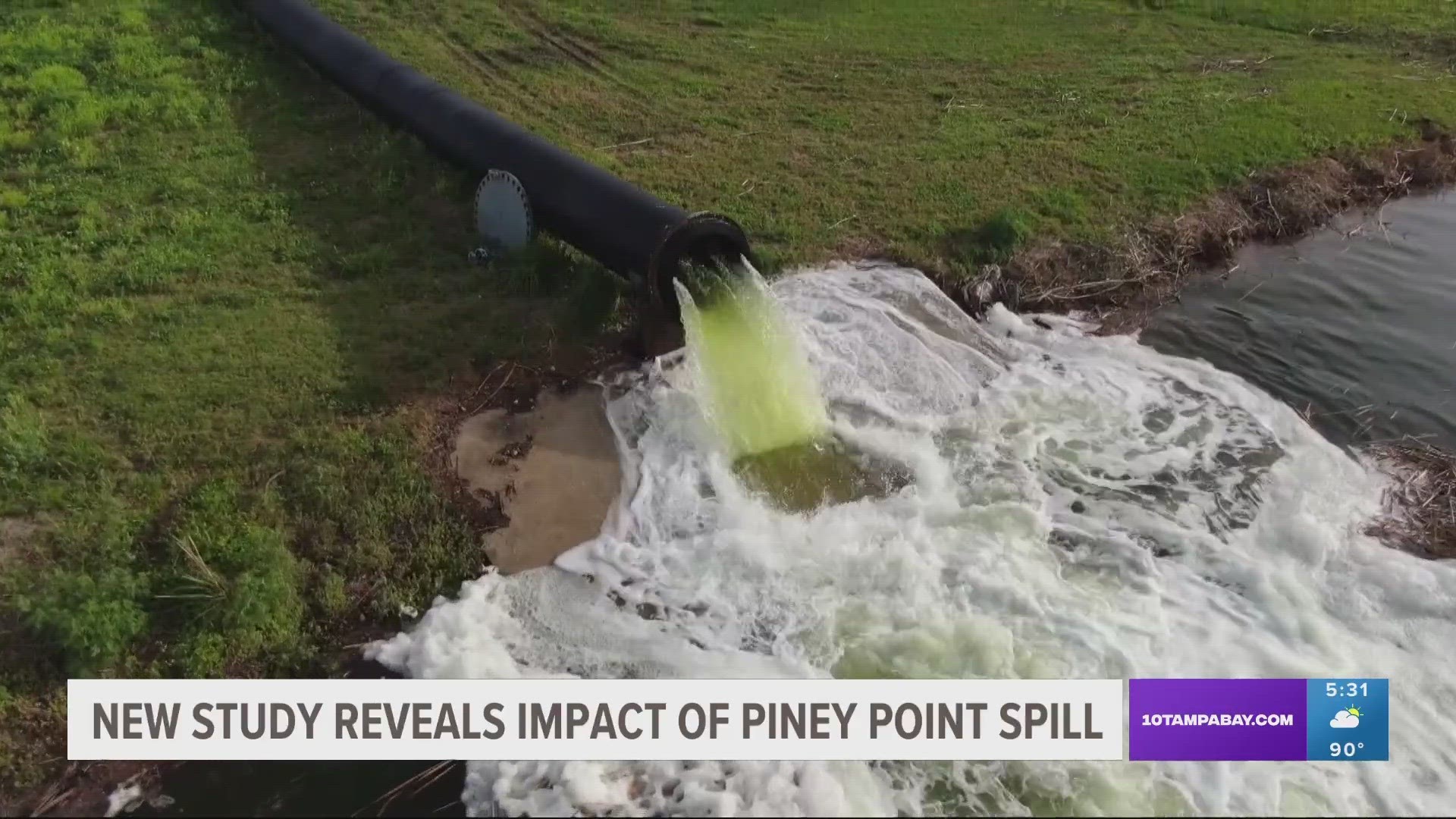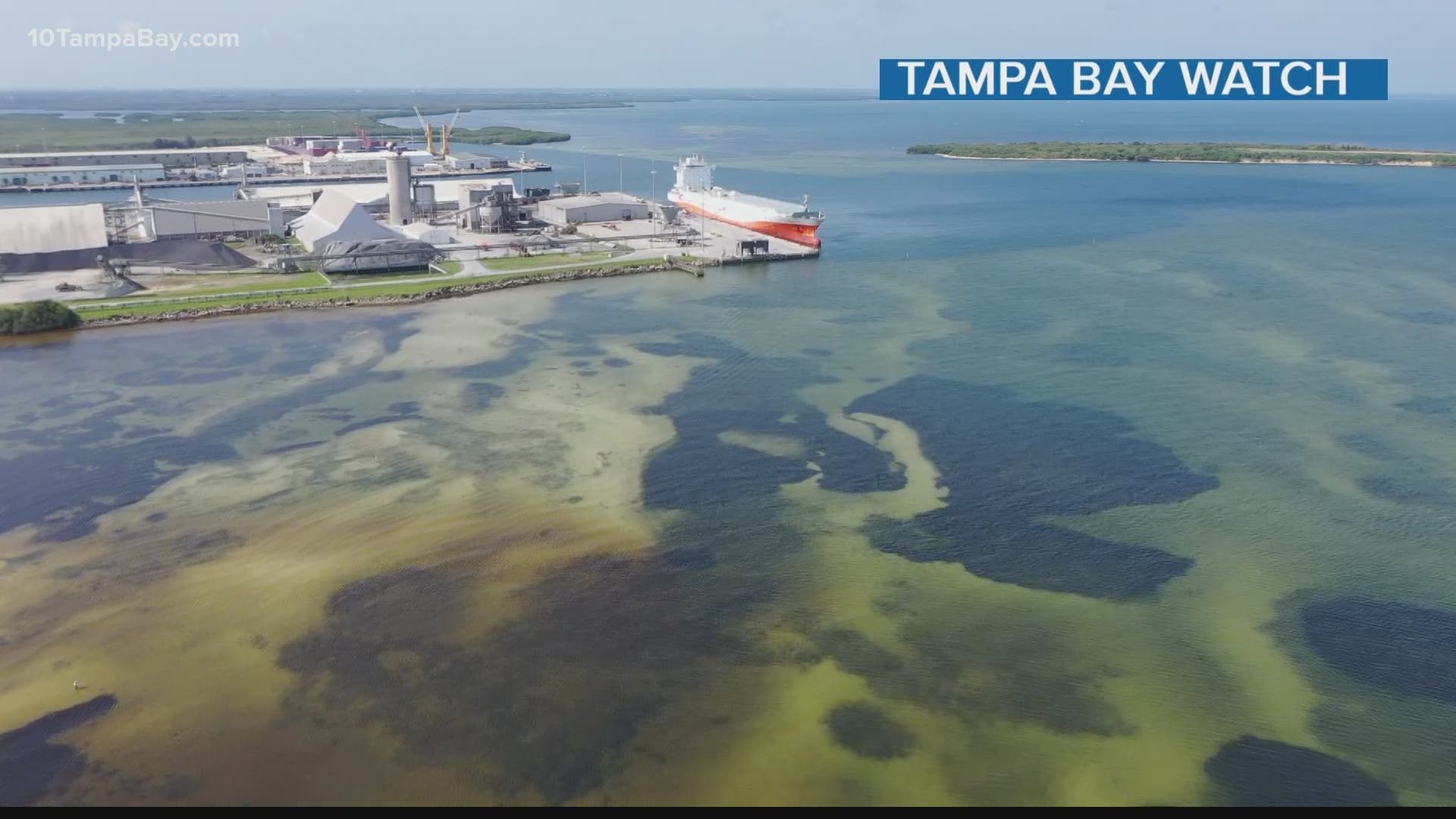MANATEE COUNTY, Fla. — Researchers found that polluted water released during the 2021 Piney Point wastewater emergency traveled farther than they originally thought.
A study published in the online journal Frontiers in Ecology and Evolution at the end of May suggests that the nutrient-rich wastewater traveled beyond Tampa Bay, reaching as far north as Tarpon Springs and as far south as Sarasota.
When the reservoir at the former Piney Point phosphate plant began leaking in 2021, more than 200 million gallons of untreated water was released into the bay to avoid what officials said could’ve been a catastrophic collapse.
To study the environmental toll the Piney Point disaster would take on our local waterways, scientists began collecting samples from several different sites, including St. Joseph Sound near Tarpon Springs.
According to the study's authors, the samples from St. Joseph Sound were meant to serve as a sort of control, assuming the nutrients wouldn't reach that far north.
But the samples showed something unexpected: traces of Piney Point pollution.
Based on certain levels of nitrogen and carbon, researchers identified a unique signature for the Piney Point water that could be used to distinguish it from other types of pollution. And that unique signature was found more than 30 miles away from Tampa Bay in the Tarpon Springs area.
Those same markers also showed that "other regions distant to the discharge site, such as upper Sarasota Bay were also likely affected by the discharged waters," the study said.
In other words, researchers discovered that polluted water from the Piney Point plant managed to travel miles into the Gulf of Mexico — likely causing environmental issues along the way.
"We didn’t know how big of a problem this was and it turns out it was massive. Spatially, and it lasted a long time," said David Tomasko, the director of the Sarasota Bay Estuary Program.
The findings of the study not only raised some red flags about how many areas continue to feel the effects of the Piney Point disaster but also confirmed some predictions USF scientists made about the wastewater flow in April 2021.
Tomasko explained there are more than 20 gypsum stacks in Florida. 10 Tampa Bay found out 22 of those are in Manatee, Hillsborough and Polk Counties.
"There’s a long history of these things having structural failures," Tomasko said. He believes the state should step in and shut them down.
"Piney Point was described as a ticking time bomb right next to Tampa Bay but we’ve got 20 of them scattered around Florida," Tomasko added.
We reached out to the Department of Environmental Protection to see how the state addresses these sites and if they are considering shutting any down. We are waiting to hear back.
How did the Piney Point disaster affect the environment?
While the lasting effects of the wastewater disaster will be studied for years to come, this report showed that nutrients from Piney Point may have fed the red tide bloom that plagued the Tampa Bay area during the summer of 2021.
It did say, however, that more research is needed before we can know for sure.
Researchers also found that the released nutrients may have contributed to seagrass losses throughout Tampa Bay, which have been happening since before Piney Point.
Even as environmental officials are working to treat the wastewater and prevent another disaster at the Piney Point site, the authors of this study said the 2021 emergency "highlights the threat that industrial infrastructure failures can cause along Florida’s coastlines."
They also concluded that more management strategies are needed to handle the "full range of consequences" that added nutrients have on our ecosystems — especially given the more intense storms, temperatures and sea-level rise brought on by climate change.


